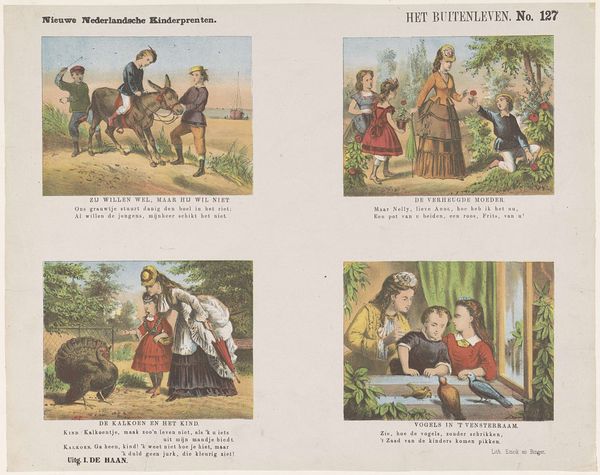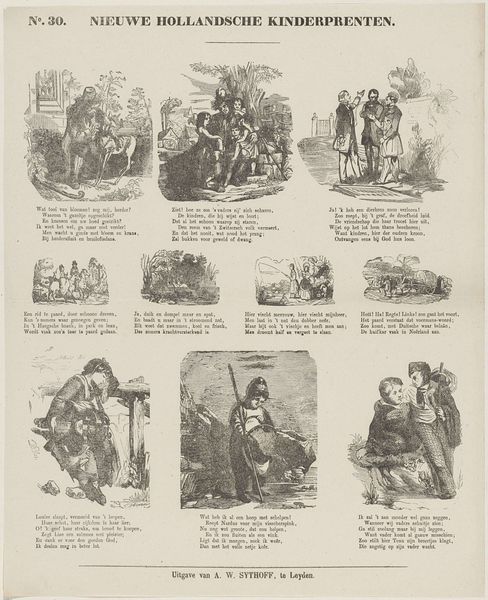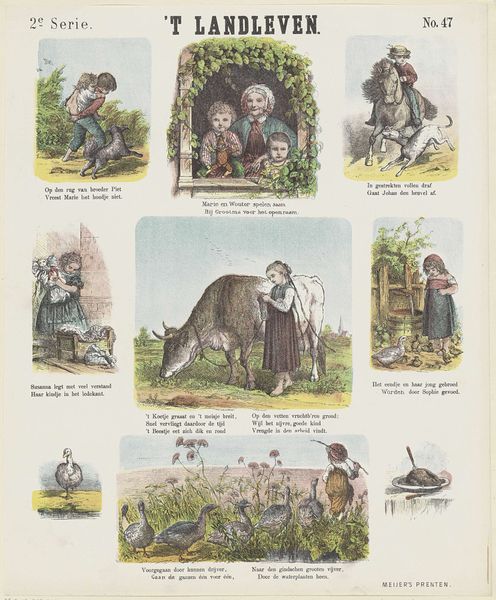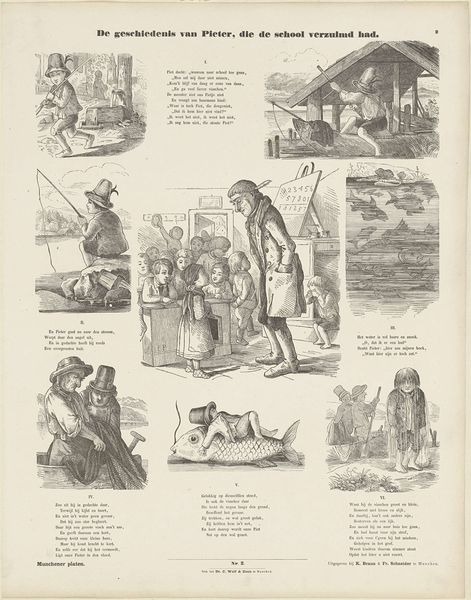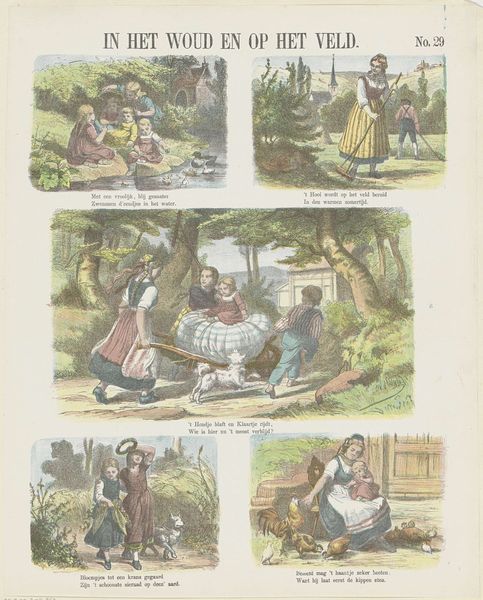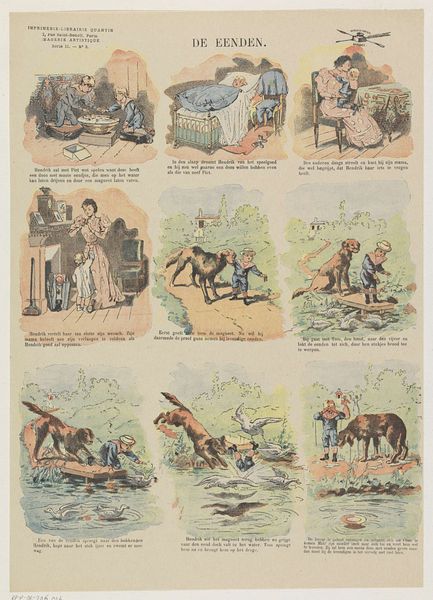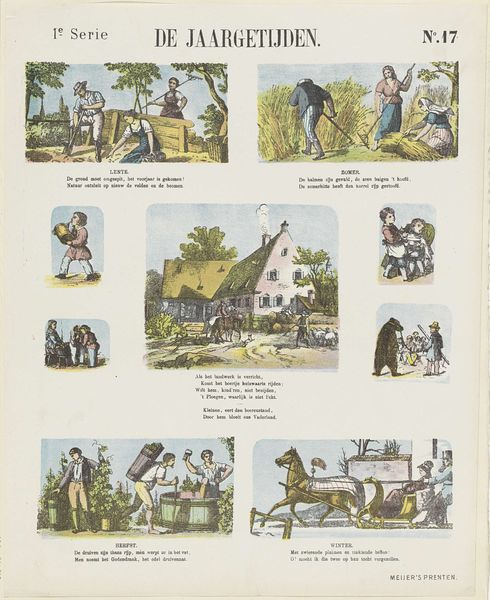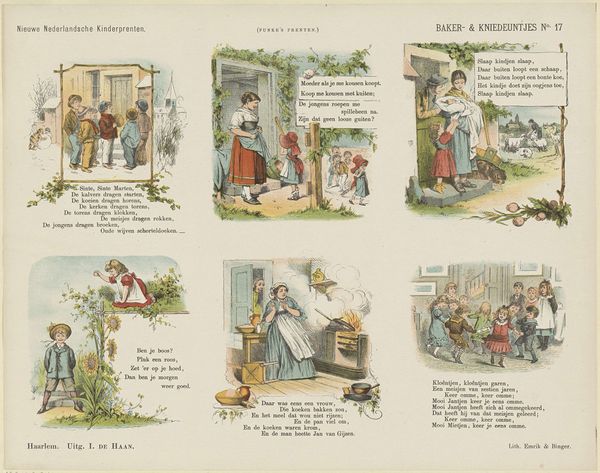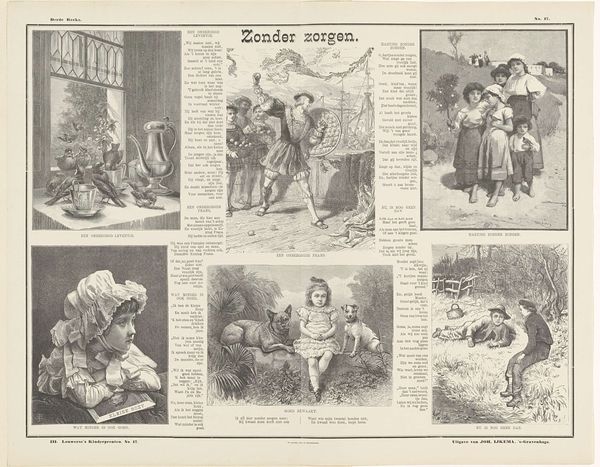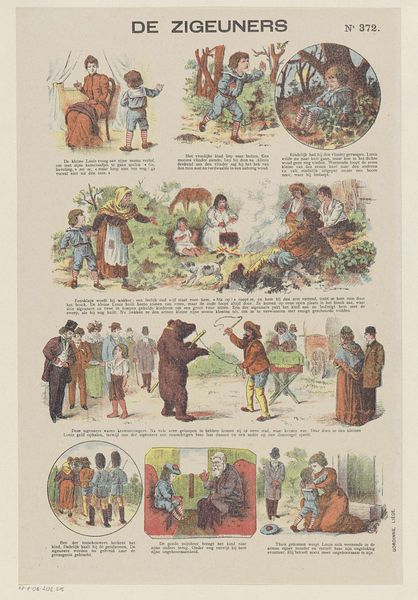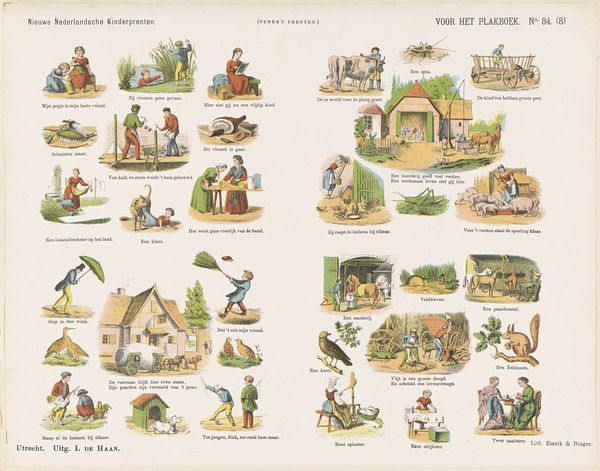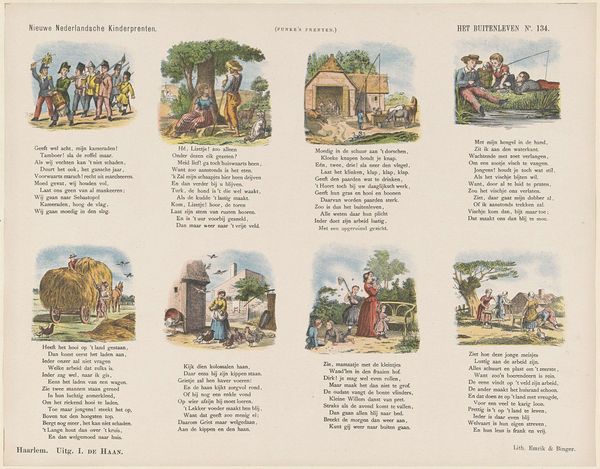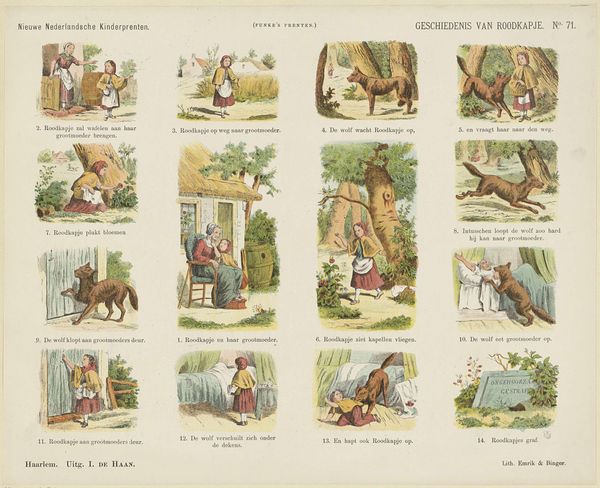
print, engraving
#
narrative-art
# print
#
traditional media
#
landscape
#
child
#
genre-painting
#
engraving
Dimensions: height 430 mm, width 550 mm
Copyright: Rijks Museum: Open Domain
Curator: Let’s discuss this print called "Te land," created between 1882 and 1905. The Rijksmuseum houses it, attributed to E. Stevens. Editor: It has the feel of an illustration torn from a children's book; rather quaint. The black and white, the idyllic scenes—it speaks to a simpler, perhaps idealized, vision of childhood. Curator: These genre scenes do appear to represent an innocent portrayal of childhood and rural life. I'm drawn to how notions of labor are represented, contrasting the 'work' depicted in each panel. A child pushing a heavy wheelbarrow seems romanticized when viewed alongside images of childhood freedom. Editor: Precisely. Children are symbols of hope, of potential, frequently aligned with the promise of the land itself. Notice the abundance of floral imagery: the girl weaving flowers into a crown, and bouquets of spring blooms, emblems of rebirth, linking children to nature’s perpetual cycle. Curator: I notice, too, a seeming segregation of genders. Girls in passive, nature-oriented scenes. Boys shown undertaking labor-type actions with defined spatial contexts that remove them from nature, which could symbolize a trajectory towards prescribed roles in the domestic sphere, reflecting larger cultural structures of that time. Editor: A compelling observation, given the engraving medium. It becomes clear how even "simple" scenes, like those within the illustrated frames, could reproduce ideas and assumptions circulating within the intended communities and intended audiences of the prints. This style echoes folk art with its accessible themes of rural harmony and innocence. It speaks volumes, even with muted tones and what could be viewed as "charming." Curator: Indeed. Examining this artwork urges us to reflect on how childhood is represented in a variety of ways. Also how depictions normalize existing social structures. Even when presented as ostensibly quaint, these visualizations speak volumes. Editor: Ultimately, viewing through an iconographic lens provides insights, linking seemingly straightforward motifs—flowers, work, nature—to far broader, persistent narratives within the cultures of the 19th-century Dutch Republic.
Comments
No comments
Be the first to comment and join the conversation on the ultimate creative platform.
